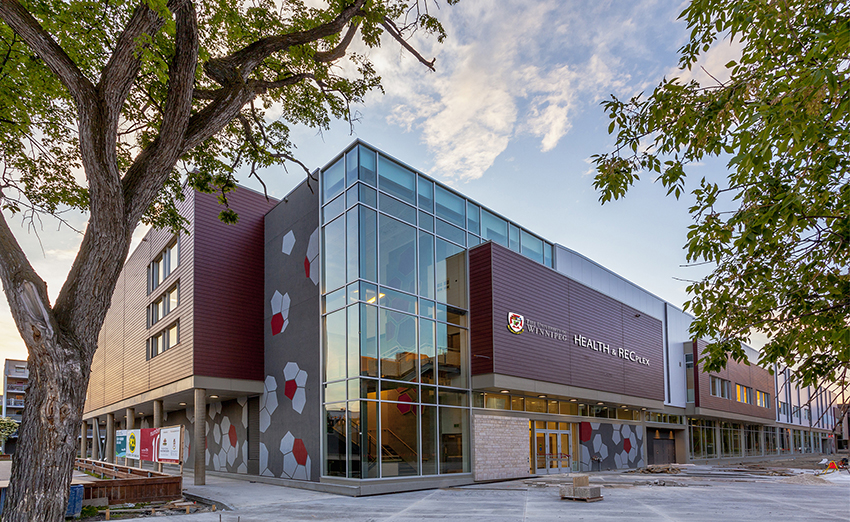By Brent Bellamy, Creative Director and Architect


Weighed down by book-filled backpacks, groups of young people brave the autumn cold as they race between monumental stone buildings set geometrically around a sprawling open lawn. This pastoral scene is the traditional image of a university campus, but today, post-secondary institutions across Canada are creating a new backdrop for student life by returning to the bustling streets and soaring office towers in the cores of cities.
In an age of globalization and mobility, universities increasingly have to compete nationally and internationally for students. Young people today are more often looking for cosmopolitan lifestyle choices and are beginning to focus on educational programming that will make them career- or enterprise-ready upon graduation.
In response to these evolving priorities, universities and colleges are looking to differentiate themselves from their competition by exploring avenues to commercialize education and pollinate research disciplines. Following business, art and technology back to the urban core can enhance collaborative partnerships and identify synergies within local clusters of creativity and innovation.
Connecting students to regional industry promotes the establishment of personal professional networks, which also supports greater retention after graduation.
The University of Windsor has become the most recent school to begin an urban migration, expanding from its suburban base with a new $70-million downtown campus. Suburban universities in mid-sized cities across the country are following this model and redefining themselves by establishing new urban footprints.
Brock University is studying the construction of a campus in the core of St. Catharines, Waterloo has moved into the centre of Kitchener, Wilfred Laurier University has established itself in downtown Brantford, and in Edmonton, MacEwan University is defining its image as the city's urban institute by consolidating into the downtown.
Many of these cash-strapped institutions have discovered that by re-engaging urban communities, new avenues of capital funding become available as cities look to invest in urban-renewal strategies that create broader economic impact. Universities can be transformative catalysts for change and provide economic stability in urban centres. Like an anchor tenant in a shopping mall, an urban campus brings a critical mass of people that can stimulate growth and development. By leveraging this impact, universities can find eager partners in local governments wanting to maximize the benefit of their tax-dollar investments within the community.
Despite this leverage, many Canadian urban universities have not embraced their role as city-builders, often functioning as islands set within, but functionally separated from their urban surroundings.
In contrast to this, the University of Winnipeg has demonstrated what can be accomplished when a post-secondary institution chooses to become a leader of urban issues within its community. Over the past 10 years, the U of W has exploded beyond its traditional block, growing by 30 per cent in area and 15 per cent in enrolment while establishing itself as a main driver of renewal in the inner city.
Guided by its Community Renewal Corporation, a not-for-profit charitable organization comprised of university and community members, the University of Winnipeg has committed itself to the highest levels of environmental, social, economic and cultural sustainability in its development. The U of W has not simply been expanding its physical footprint, it has also transformed its social commitment and level of community engagement.
The United Health and RecPlex, adjacent to historic Wesley Hall, is the latest building to redefine the campus image while exemplifying these guiding principles. Targeting LEED Gold environmental certification, the newly opened sports and recreation facility houses a divisible FIFA-standard soccer pitch, a running track, gymnasium and a health, wellness and healing centre. Uniquely, the new facility comes with a formalized Community Charter that establishes a set of guiding principles to define the building's role within the neighbourhood. The charter will be administered by a community access advisory committee, ensuring at least one-third of the building's scheduled availability is reserved for community uses such as athletic programming for inner-city children, drop-in gymnasium hours and summer adventure camps.
The U of W's innovative, community-focused growth will continue through future projects that include the transformation of the Merchants Hotel on Selkirk Avenue into an affordable-housing and education complex, as well as a highrise residential development near Portage Avenue that will be a unique blend of student housing, assisted living and market units.
As the U of W redefines the downtown's west side, Red River College is transforming the Exchange District to the east. Since 2004, the architecturally celebrated Princess Street campus has brought thousands of students to the area each day. This energy has recently been supplemented through the rebirth of Union Bank Tower on Main Street as the Paterson Global Foods institute.
Since relocating its Broadway and Memorial Boulevard campus to the Fort Garry Agricultural College in 1950, the University of Manitoba has retained little presence in downtown Winnipeg. With the recent announcement of a $500-million capital campaign however, there may be an opportunity to leverage part of that public investment to allow the U of M to join its post-secondary partners in the downtown, creating an urban neighbourhood of innovation and creativity that provides a greater physical connection to the local community.
A satellite campus can be logistically challenging, but the U of M has some experience with the concept, operating the faculties of medicine and pharmacy from Health Sciences Centre. There may be other specialized disciplines and research programs that can benefit from reduced geographic isolation, allowing them to leverage existing ecosystems, grow their programming and advance community partnerships. Some of the challenges of proximity to the main campus may be solved through creative solutions such as a reciprocal partnership with the U of W to offer elective courses or library and student services.
In 2009, Simon Fraser University became a key partner in the redevelopment of the iconic and long-vacant Woodward's store in Vancouver's beleaguered Downtown Eastside, realizing one of Canada's most significant urban-renewal projects. In 2006, the University of Alberta transformed Edmonton's vacant downtown Hudson's Bay store into Enterprise Square, becoming a symbol of the city's urban rebirth. Both projects demonstrate the positive and lasting impact a university can have on its city. Similar opportunities exist for Manitoba's largest educational institution, including the possible redevelopment of our own Hudson's Bay store in downtown Winnipeg.
Winnipeg's core is in the midst of being remade. Expansion of the city's post-secondary institutions has already had a transformative effect on the city centre. Working to establish a greater downtown presence for all of Winnipeg's advanced institutions will broaden this impact and provide a multiplier effect for the public investment. By getting ahead of the national trend to urbanize the university experience, reinforcing support for the growth of existing downtown institutions as well as facilitating opportunities for new players, there is vast potential to generate lasting and mutually beneficial relationships for students, local industry and the city.
Brent Bellamy is senior design architect for Number Ten Architectural Group.
bbellamy@numberten.com
Republished from the Winnipeg Free Press print edition December 1, 2014 B5

